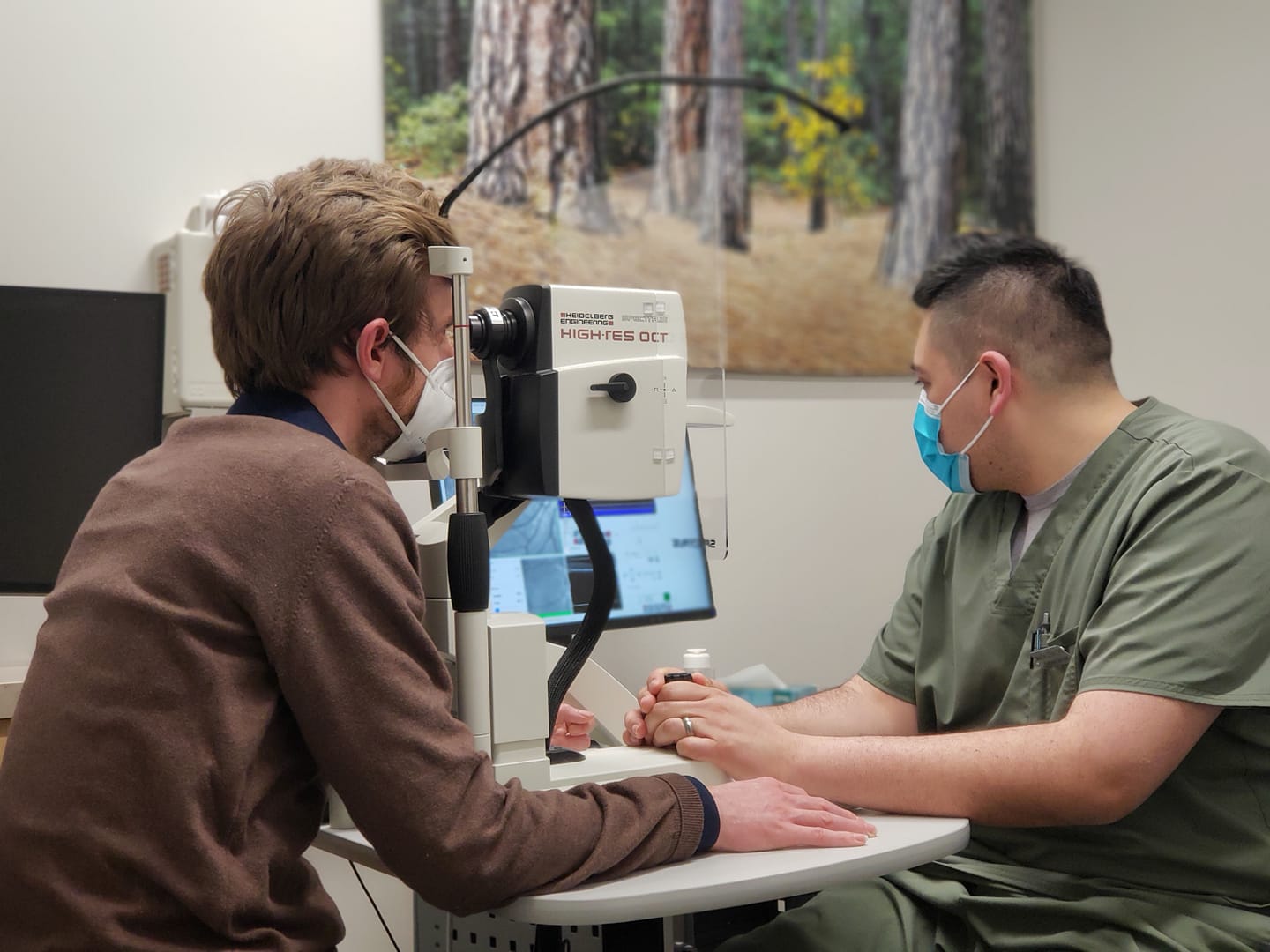Central Serous Chorioretinopathy

Produktbeskrivelse
Central Serous Chorioretinopathy affects the macula, the part of the retina responsible for central vision. This disorder is characterized by fluid leakage from the choroidal circulation underneath the retina. The leakage occurs due to a defect in the retinal pigment epithelium (RPE), a single layer of tissue normally separating the retina and the choroid, allowing fluid from the choroid to accumulate under the retina.
Central serous chorioretinopathy can lead to a “serous detachment” or blister beneath the retina, which causes distorted or blurry vision, a blind or gray spot in central vision, and unexplained flashes of light. The exact cause of central serous chorioretinopathy is not known, but it is known to be associated with stress and steroid medications.
It is currently believed that the choroidal circulation develops a pool of extracellular fluid or edema. This edema or leakage puts pressure on the RPE, causing it o blister up into focal or multifocal elevations known as serous detachments of the pigment epithelium. The blister develops an opening allowing fluid to leak under the retina. This leak is called “avascular” since it is not usually associated with the development of abnormal blood vessels (neovascularization), but this can occur as a secondary complication of central serous chorioretinopathy.
One of the challenges of detecting central serous chorioretinopathy is differentiating between the two kinds of leakage. This is especially true in middle-aged and older people who are at greater risk of developing both central serous chorioretinopathy and age-related macular degeneration. The distinction is important, since the treatment differs for the two types.
Read more: https://www.vrmny.com/conditions/central-serous-chorioretinopathy/

